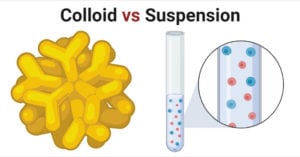Colloid vs Suspension- Definition, 12 Key Differences, Examples
Colloid Definition A colloid is a mixture in which one of the soluble or insoluble particles is microscopically dispersed throughout the other substance. The colloid can be differentiated from a … Read more

